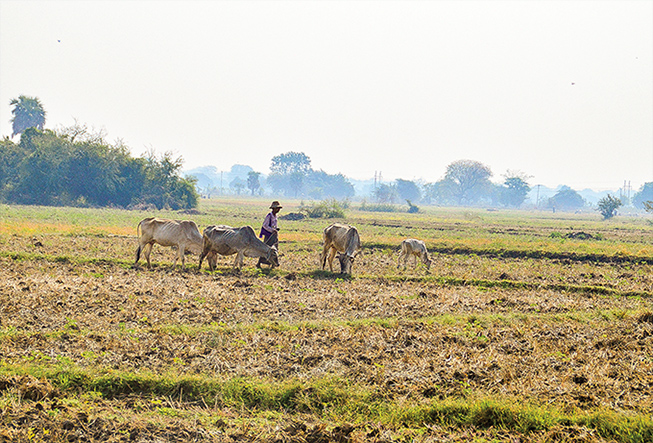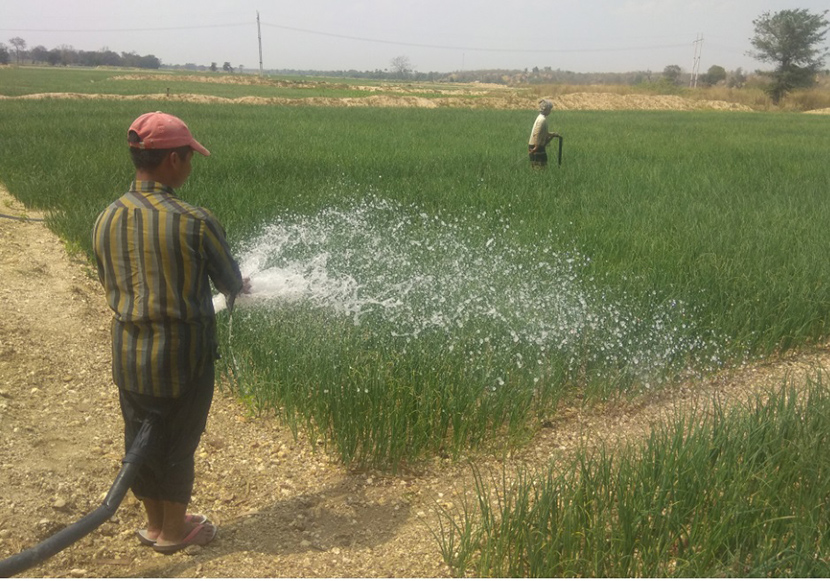By Maung Lu Aye
Myanmar had abundant water resources, holding 16 per cent of water resources among the ten ASEAN countries and 12 per cent of all Asia. However, with diversity in rainfall, increase in population and population density, the rise of industrial zones and economic zones and other changes to social systems means there would be a rapid increase in demands for water supply and new challenges for providing adequate water to every person.
There were still areas where the basic need for safe water was not fulfilled and unproper dumping of wastewater and chemicals into rivers and streams were still causing water pollution. Systematic water management processes need to be implemented to solve these issues and develop the water resource sector. This was one of the reasons behind forming the NWRC in 2013, which was reformed to accommodate ministry reforms in 2016.

Meanwhile, Myanmar, which is no stranger to bad weather conditions, is also facing the climate-change induced extreme weather conditions that caused floods, droughts and higher temperatures for the last over 30 years.
Water shortages is common in some parts of Myanmar especially in the country’s dry zone in central Myanmar.
Other water issues are pollution and lack of safe drinking water.
Climate change
The drought in early monsoon season of last year affected oil crop farmers in central Myanmar. The about one-month-long drought has spelt ruin for sesame farmers, and groundnut farmers in Magway. The drought also caused shortage of feedstuff for draught cattle and drinking water.
We should keep in mind that Myanmar is the world’s second most vulnerable country to climate change, according to the Global Climate Risk Index prepared y research group Germanwatch. Studies have shown that the onset of monsoon is becoming more variable, increasing the risk of drought.
Meanwhile, scarcity of clean water in villages across the country has become common in the summer season, with lakes that once supplied drinking water running dry.
The worst has not yet come. Food security will be at risk if more rice-producing regions experience crop failure, and an energy crisis will be imminent if supply of water at hydropower plants falls short. The chain reaction set off by drought will continue further in the form of inflation as a result of declining rice production.
Now is the time for us to teach our farmers about drought tolerant farming techniques to ensure they produce more food and more profit with less water.
In fact, every region has every has different climate change impacts.
Not just Myanmar, the whole Southeast Asia region is faced with intensification and a changing geography of drought, and of disaster risk in Southeast Asia is faced with intensification and a changing geography of drought, and of disaster risk in general, as climate change converges with social, environmental and economic stresses.
Climate change has already happened. Now is the time to adapt instead of fighting it. To be able to adapt to these climate change challenges, policy make the right decisions.
To mitigate the impact, drought risk assessment and early-warning services should be improved through the sharing of data from space-based technologies.
Risk-financing instruments as well as improvement of people’s awareness of the effects of drought are also needed.
Economic losses
According to a report jointly produced by ESCAP and ASEAN as part of their disaster-risk reduction efforts, Myanmar is among the regional countries facing the highest average annual loss in the agriculture sector due to climate change. Other countries which are facing the same fate are Cambodia, Laos, Viet Nam and the Philippines.
According to the Asia-Pacific Disaster Report 2019, annual economic losses in Asia Pacific more than quadruple when slow-onset disasters, most notably drought, are added to the region’s disaster risk landscape.
The average annual loss for the region is $675 billion, of which $405 billion, or 60 per cent, is drought-related agricultural losses.
In Southeast Asia, the average annual loss is higher than the Asia-Pacific regional average, reaching $86.5 billion or 3 per cent of the regional GDP.
No Southeast Asian country can afford to ignore drought when trying to mitigate the economic impact of natural disasters, according to experts.
The significance of economic losses due to agricultural drought was consistent across all countries for which data is available.
Disasters continue to erode economic gains. Ultimately this means that disasters will limit the ability of economic growth to eradicate poverty.
Drought can have a devastating cumulative impact, striking hardest at the poor and heightening inequality and degrading land, all of which increases the prospects of conflict.
Managing the country’s water resources was an intrinsic part of developing all of our countries and required everyone’s participation in implementing the UN’s Sustainable Development Goals to keep the endeavour ongoing.
The National Water Resources Committee of Myanmar was continually partnering with relevant ministries, partner countries, and international organizations to conduct observation programs and projects.
Regional cooperation included partnering with ASEAN, the Mekong River Commission, and the Lancang-Mekong Cooperation. Relevant ministries and city development committees were constructing more infrastructure for storing more water. They were conducting programs to reduce wasting water and to increase conservation.
We would like to request partner countries, local and foreign NGOs to continue their cooperation with the Union Government and relevant ministries to develop the water resource sector.
It is always more economical to prepare for something first than deal with its aftermath.



